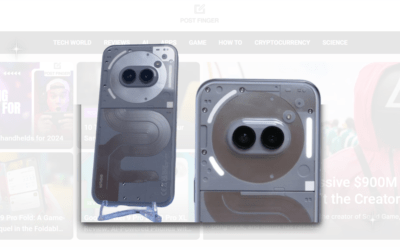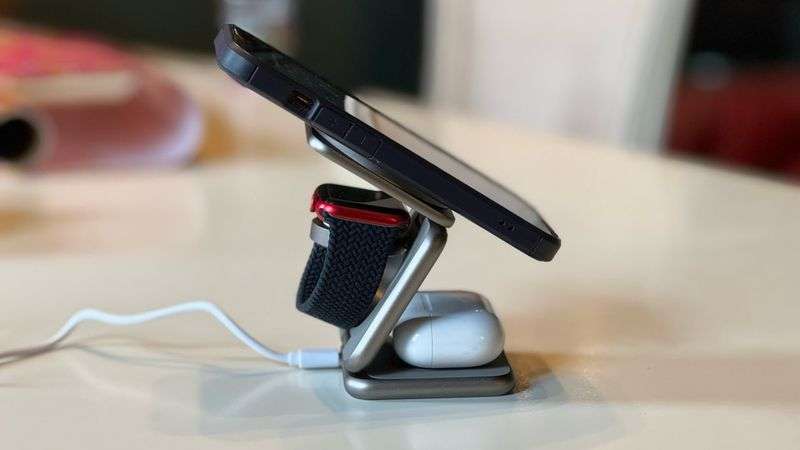Samsung Galaxy Ring Review: A Promising Start, But Is It Worth the Price?

The wearable tech industry continues to evolve, and Samsung has entered the fray with its newest offering, the Samsung Galaxy Ring. With a sleek design and a focus on sleep tracking and basic activity monitoring, this smart ring aims to be a lightweight, unobtrusive health companion. But with a price tag of $400, it’s essential to consider whether the Samsung Galaxy Ring truly delivers on its promises or if it falls short compared to competitors like the Oura Ring.
A Closer Look at the Samsung Galaxy Ring
At first glance, the Samsung Galaxy Ring impresses with its minimalist design and lightweight build. Weighing just 2.3 grams, this ring is almost half the weight of its main competitor, the Oura Ring. For those who are sensitive to the weight and feel of wearables, the Samsung Galaxy Ring offers a comfortable fit that’s easy to forget you’re even wearing. This is especially beneficial for users who prioritize comfort during sleep tracking.
Sleep Tracking: A Key Feature

The primary selling point of the Samsung Galaxy Ring is its ability to track sleep patterns. As sleep tracking technology has advanced, devices like the Galaxy Ring have moved beyond merely logging how long you sleep. Samsung’s device uses heart rate data to provide insights into your sleep stages, such as REM and deep sleep, and delivers this information in a user-friendly format through the Samsung Health app. The app not only records your sleep but also provides context, helping you understand the importance of each sleep stage and how your sleep compares to others.
Activity Tracking: Basic but Effective

While the Samsung Galaxy Ring excels in sleep tracking, its activity tracking capabilities are more limited. The ring automatically detects and logs walking and running sessions, providing data on speed, cadence, heart rate, and distance traveled. However, it doesn’t track a wide range of activities, which is a drawback compared to other fitness trackers on the market. For users who are looking for detailed workout tracking across various exercises, the Galaxy Ring may feel a bit basic.
Battery Life and Usability
Samsung claims that the Samsung Galaxy Ring can last up to seven days on a single charge, and this estimate holds up under real-world usage. The ring’s battery life is impressive, especially for such a small device, though it does require regular charging to avoid running out of power mid-week. The charging process is straightforward, with a quick 30-minute charge providing a significant battery boost.
The Verdict: Is the Samsung Galaxy Ring Worth It?
For Samsung enthusiasts or those already invested in the Samsung ecosystem, the Samsung Galaxy Ring is a tempting option. It integrates well with Samsung Health and other Samsung devices, offering a seamless user experience. However, with a price tag of $400, it’s essential to weigh the Samsung Galaxy Ring’s features against its competitors. The lack of extensive activity tracking and the absence of features like an audible alarm for finding a lost ring may leave some users wanting more.
If you’re in the market for a low-profile, comfortable wearable focused on sleep and basic activity tracking, the Samsung Galaxy Ring could be a good fit. However, those looking for a more comprehensive fitness tracker may want to consider other options. As Samsung continues to refine its wearable technology, the Galaxy Ring has the potential to evolve into a more feature-rich device. For now, it’s a solid debut that shows promise but might not be the best choice for everyone.
Samsung Galaxy Ring: The Design and Comfort Factor

One of the standout features of the Samsung Galaxy Ring is its design. Weighing in at just 2.3 grams, this ring is almost imperceptible when worn. For many users, especially those who are sensitive to the feel of wearables during sleep, this is a significant advantage. Unlike bulkier devices that can be cumbersome and disruptive, the Galaxy Ring’s slim profile ensures that it doesn’t get in the way, whether you’re typing at your desk or drifting off to sleep.
The ring’s build quality is also impressive. It’s designed to withstand everyday wear, including exposure to soap and water, making it a practical choice for those who want a device they don’t have to constantly remove. However, if you’re like me and prefer not to wear rings when your hands are wet or covered in lotions, the Samsung Galaxy Ring is easy to slip on and off without impacting its performance.
Sleep Tracking: A Deep Dive into Your Rest
Samsung has clearly put a lot of thought into the sleep tracking capabilities of the Samsung Galaxy Ring. Gone are the days when sleep tracking merely involved logging the number of hours you slept. With the Galaxy Ring, Samsung takes it a step further by using heart rate data to determine the different stages of your sleep, including REM and deep sleep.
The insights provided by the Samsung Health app are not just about the numbers—they’re about understanding what those numbers mean. For instance, the app offers explanations on why certain sleep stages are essential for recovery and how your sleep patterns compare to those of other users. This contextual information is invaluable for anyone serious about improving their sleep quality.
One unique feature of the Samsung Galaxy Ring is its ability to track skin temperature during sleep. This feature can be particularly useful in understanding how your body’s temperature fluctuates throughout the night, providing insights that go beyond what traditional sleep trackers offer. However, it’s worth noting that the accuracy of some readings, like blood oxygen levels, can vary depending on which finger you wear the ring on.
Activity Tracking: Limited but Insightful
When it comes to activity tracking, the Samsung Galaxy Ring is somewhat limited in scope. It’s designed to automatically detect and log walks and runs, offering data on average speed, cadence, heart rate, and distance traveled. While this information is comprehensive for those specific activities, the ring does not support tracking for a wider variety of exercises like cycling, swimming, or high-intensity interval training (HIIT).
That said, for the activities it does track, the Samsung Galaxy Ring provides detailed insights. For example, the ring’s ability to detect even short walks accurately ensures that all your physical activity throughout the day is logged, giving you a more complete picture of your daily movement. This is a nice touch, especially for users who want to ensure that even their most minor activities are counted.
However, compared to other fitness trackers like the Oura Ring, which supports over 40 different activities and offers features like Workout heart rate tracking, the Samsung Galaxy Ring’s capabilities might seem basic. For users who require more extensive activity tracking, this could be a limitation.
The Samsung Health App: A Mixed Experience
The Samsung Health app, where all the data from the Samsung Galaxy Ring is displayed, is a critical component of the overall experience. While the app is generally user-friendly and provides detailed insights, there are areas where it could be improved.
One of the main issues is the confusing interface for setting up automatic activity detection. Users might find the layout somewhat unintuitive, requiring multiple steps and toggles to enable features that should be straightforward. This can lead to frustration, especially for those new to Samsung’s ecosystem.
Another issue arises if you’re using multiple Samsung devices, like the Galaxy Watch, alongside the ring. The Health app aggregates data from all your Samsung devices, which is great in theory. However, inaccuracies in data recorded by other devices, like phantom workouts detected by a watch, can skew your overall activity score and recommendations. This is a problem that Samsung will need to address to ensure that users receive accurate and reliable health insights.
Battery Life: Enough to Get You Through the Week
Battery life is always a concern with wearables, but the Samsung Galaxy Ring performs admirably in this department. Samsung claims that the ring can last up to seven days on a single charge, and in real-world testing, this claim holds true—provided you’re willing to let the battery level drop quite low before recharging.
For most users, the Samsung Galaxy Ring’s battery life will be more than sufficient, especially since it charges quickly. In just 30 minutes, you can restore a significant portion of the battery, making it easy to keep the ring powered up with minimal downtime.
Final Thoughts: Is the Samsung Galaxy Ring Right for You?
The Samsung Galaxy Ring is a solid first entry into the smart ring market. It’s lightweight, comfortable, and provides valuable insights into your sleep and daily activity. However, it’s important to weigh its limitations against your needs.
If you’re primarily looking for a device that tracks sleep and basic activities like walking and running, and you value comfort and minimalism, the Samsung Galaxy Ring is worth considering. It’s especially appealing to those who are already integrated into the Samsung ecosystem and can take full advantage of the Samsung Health app and other Samsung features.
However, for users who need more comprehensive activity tracking or who are looking for a device with more features, the Samsung Galaxy Ring might feel a bit basic, especially at its $400 price point.
Overall, the Samsung Galaxy Ring is a promising start, and with continued updates and improvements, it has the potential to become a must-have device in the wearable tech market. For now, it’s a niche product that will appeal most to those who prioritize comfort and sleep tracking in their wearable devices.









Hello Neat post Theres an issue together with your site in internet explorer would check this IE still is the marketplace chief and a large element of other folks will leave out your magnificent writing due to this problem
Hello! Thank you for your feedback and for pointing out the issue with Internet Explorer. We’re aware that some users might be experiencing difficulties, and we’re working to resolve the problem as quickly as possible. In the meantime, we recommend using a different browser for the best experience on our site. We appreciate your support and hope you’ll continue to enjoy our content!